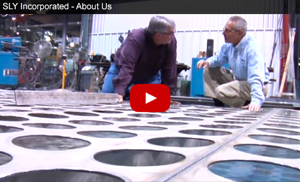According to Fortune Business Insights, the global lithium mining market is projected to grow at least 6% for the next several years. This lightweight metal is inextricably linked to modern society’s move toward a lower carbon economic model.
Lithium carbonate is the most common output of either hard rock mining or high-salinity brines. Its uses range from medications to adhesives, glazes, grease and lubricants to a cement additive. However, its function within battery manufacturing is the main driver behind its increase in popularity.
Once lithium is obtained from mining or brining, it requires further processing to achieve the right size and specifications for this use whether for batteries or other products. This processing, particularly milling and grinding creates fine dust, posing significant safety risks.
Lithium processing operations can mitigate risk by practicing good housekeeping and maintenance and by installing dust collection systems. These measures can improve worker health and wellbeing and preserve capital equipment and infrastructure.

The properties of lithium dust
Lithium dust is both combustible and reactive. This fine particulate material has varying characteristics, but in general, the following factors will impact lithium dust behavior and safety measures:
Lithium Dust Particle Size
Lithium dust can have a particle size ranging from a few micrometers to several hundred micrometers in diameter, depending upon the desired usage or end application. The smaller the particles are, typically the more significant the hazard.
Smaller particles can penetrate more deeply into the lungs if inhaled. In addition, the National Fire Protection Agency (NFPA) indicates that as processing methods advance, it creates smaller particles than possible in the past. This also increases the hazard.
The emergence of “nanopowders” or microparticles is often associated with metals manufactured or processed as raw materials for various precision industries. The smaller the particle size, the higher the specific surface area. This specific surface increases the likelihood the particles will ignite and burn faster.
Testing has demonstrated that these nanoparticles can generate an explosion without an outside ignition source. In addition, many of these nanoparticle metals burn at extremely high temperatures. For example, lithium can create a metal fire of 2,000° C or 3,632° F.
Lithium Dust Weight
Lithium dust is very lightweight, with a density of approximately 0.534 g/cm3. The lightest of all metals, it has about half the density of water. This lightweight material can easily be dispersed into the air and remain suspended for extended periods. Its suspension also increases the risk of inhalation or accumulation into a cloud ripe for combustion.
Lithium Dust Reactivity
Lithium is a highly reactive substance that responds vigorously to water, steam, or moisture in the air, producing flammable hydrogen gas. This reactivity increases the risk of explosions or fires when in the presence of ignition sources.
In addition to water, lithium reacts violently with oxidizing agents, such as metal salts, strong acids, reducing agents, peroxides and more.
Lithium Dust Color
Lithium dust is typically gray or silver, making it difficult to distinguish it from other, similar color dusts.
Lithium Dust Hazards
Its reactivity and explosive potential are obvious hazards. However, lithium dust can also irritate the skin and eyes, causing chemical burns if it comes into contact with the skin.
New combustible dust standards in the works
The NFPA is working on a new comprehensive dust standard due for release in 2025. The new Standard for Combustible Dusts, or NFPA 660, will consolidate six existing NFPA dust standards into one. Lithium is currently included in NFPA 484, Standard for Combustible Metals, Metal Powders and Metal Dusts.
A lithium fire falls into Class D for combustible metals. This requires an extinguisher rated for Class D fires. Poisonous gases created when lithium combusts include lithium dioxide and lithium hydroxide. As an important note, fires may restart after being extinguished. Explosion protection measures and extra caution are recommended.
Lithium processors require a high-performance, industrial dust collection system that is customizable to respond to lithium dust's unique qualities and maintain safety. Options include reliable baghouses, wet scrubbers, cyclonic dust collectors, and loading spouts. This equipment should promote dust capture and collection, focusing on safety, material recovery and air quality.
Sly LLC offers a TubeJet® pulse jet collector with a steady pressure drop for online cleaning. A full range of media choices for dust collector filters can capture up to 99% of either nuisance or process dust.
Customization incorporates design modifications that can help solve some of the more common challenges with lithium dust collection and dust collector safety, including:
-
Air-to-cloth ratio
-
Inlet location and placement
-
Bag filter media
-
Custom duct work
-
Explosion venting and electrical systems
Sly LLC has more than 100 years’ experience in industrial dust collection and expertise in lithium dust collection that has grown and expanded alongside the industry’s growth. We have worked with lithium processing operations of various types and sizes for more than twenty years.
Companies count on Sly’s expertise and its discretion. Sly recognizes each lithium processing operation has a unique set of proprietary processes. To read more about the lithium processing industry and the types of dust collection systems Sly LLC can offer, download our white paper. Call Sly LLC for a customized dust collection system that can help maintain the safety and efficiency of your lithium processing facilities.
Author: Dave Mosinski, Regional Sales Manager
Dave has been in the dust collection industry and with Sly for over 26 years.



